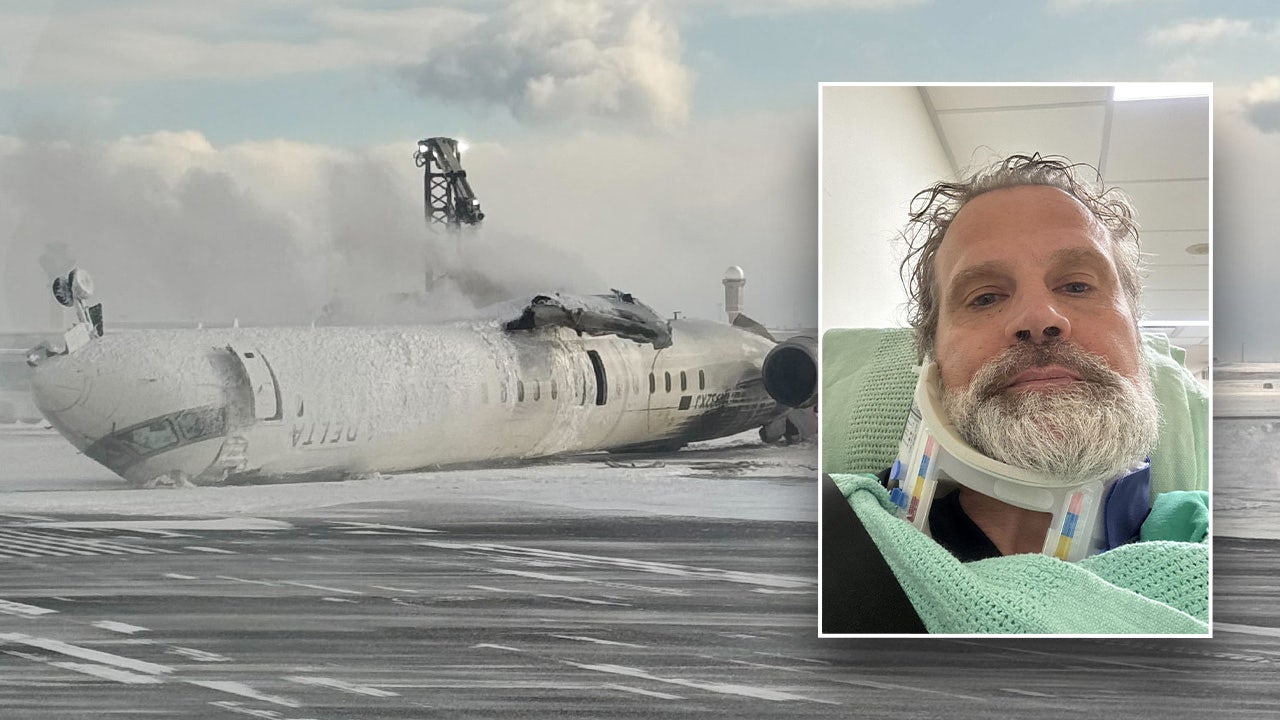United States
Delta plane crash survivor thought he might die when aircraft flipped: ‘This is it’

A harrowing incident unfolded at Toronto Pearson International Airport on Monday when a Delta Air Lines flight from Minneapolis, Minnesota, crash-landed, flipped upside down, and burst into flames. The plane, carrying 76 passengers and four crew members, skidded across the snow-covered runway, sending shockwaves of fear through everyone on board. Among the passengers was Nate Richie, a Florida man traveling to Toronto for work, who found himself in a desperate fight for survival. Richie’s journey, which had started as a routine flight, quickly turned into a nightmare that no one could have anticipated.
The flight itself had been uneventful for Richie, who boarded Delta Flight DL4819 in Minneapolis after leaving his home in southwest Florida. As the plane approached Toronto, Richie recalls feeling a mix of relief and routine, expecting a smooth landing. But seconds after touching down, the aircraft’s tone shifted dramatically. The plane careened out of control, and in an instant, the familiar sensations of flight gave way to chaos. Richie, sitting by the window, described the terrifying moment when the plane flipped onto its back, leaving him suspended upside down by his seatbelt. “You start thinking, ‘this is it,’” Richie told Fox News Digital, recounting the moment his life flashed before his eyes. “You think about your loved ones—my wife and children—and you just try to brace yourself.”
The crash was nothing short of apocalyptic. Video footage captured the harrowing scene as the aircraft slid across the icy runway, its right wing tearing off and flames erupting from the rear. Inside the plane, the impact was violent. Passengers were jolted violently, with debris flying through the air and screams filling the cabin. Richie recalled the sound of explosions and the sight of jet fuel spilling over the windows as black smoke billowed from the tail of the plane. Despite the chaos, Richie managed to free himself from his seatbelt and quickly sprang into action, helping other passengers locate the nearest exit. The evacuation was frantic, with many passengers forced to abandon their belongings—including coats and luggage—and flee into the freezing cold.
Miraculously, everyone on board survived the crash. However, the ordeal left its mark. Twenty-one passengers were taken to local hospitals with non-life-threatening injuries, and by Wednesday morning, all but one had been released. Richie himself sustained injuries to his head and neck and was rushed to the hospital, where he was treated and discharged the same night. Though physically battered, Richie’s mental wounds ran deeper. “It’s a lot to process,” he admitted, describing how the crash has left him struggling to sleep and eat. “I’m not sleeping, I’m not eating. It’s just a lot of emotions, and I’m trying to unpack those. It’s really tough right now.”
The crash has sparked widespread discussion about aviation safety, a topic that has gained renewed attention in recent months. Despite the incident, experts emphasize that air travel remains one of the safest modes of transportation. According to data from the National Safety Council, the chances of being involved in a plane crash are statistically minuscule. Modern aircraft are equipped with a host of safety features, from collision avoidance systems to fire-resistant materials, all designed to protect passengers in the event of an emergency. Retired U.S. Navy pilot Armen Kurdian highlighted the role of engineering in preventing greater tragedy, pointing to the durability of airplane seats, which are built to withstand forces up to 16 times the force of gravity. “The last thing you want is seats coming loose, and then a mishmash of bodies and seats ricocheting inside the fuselage,” Kurdian explained.
Richie, for his part, credits the quick actions of the flight attendants and the simple but critical safety measures—like seatbelts—for saving lives. “It felt like the stewardesses did a great job taking action, giving instructions and directing people to get out of the plane,” he said. His words echo the sentiment of many in the aviation community, who have praised the crew’s professionalism and the resilience of the aircraft’s design. The crash also underscores the importance of preparedness, both on the part of the airline and its passengers. As investigators work to determine the cause of the crash, the broader aviation industry remains committed to learning from the incident and further improving safety protocols.
Even as the investigation unfolds, the human side of the story is impossible to ignore. Richie’s journey from the crash site to the road home, where he is now reunited with his wife, children, and grandchildren, serves as a testament to resilience. His words carry a poignant reminder: “Always hug your loved ones. You might not see them again.” For Richie and the other survivors, the road to healing will be long, but their story is one of hope and gratitude—in the face of disaster, humanity endures.